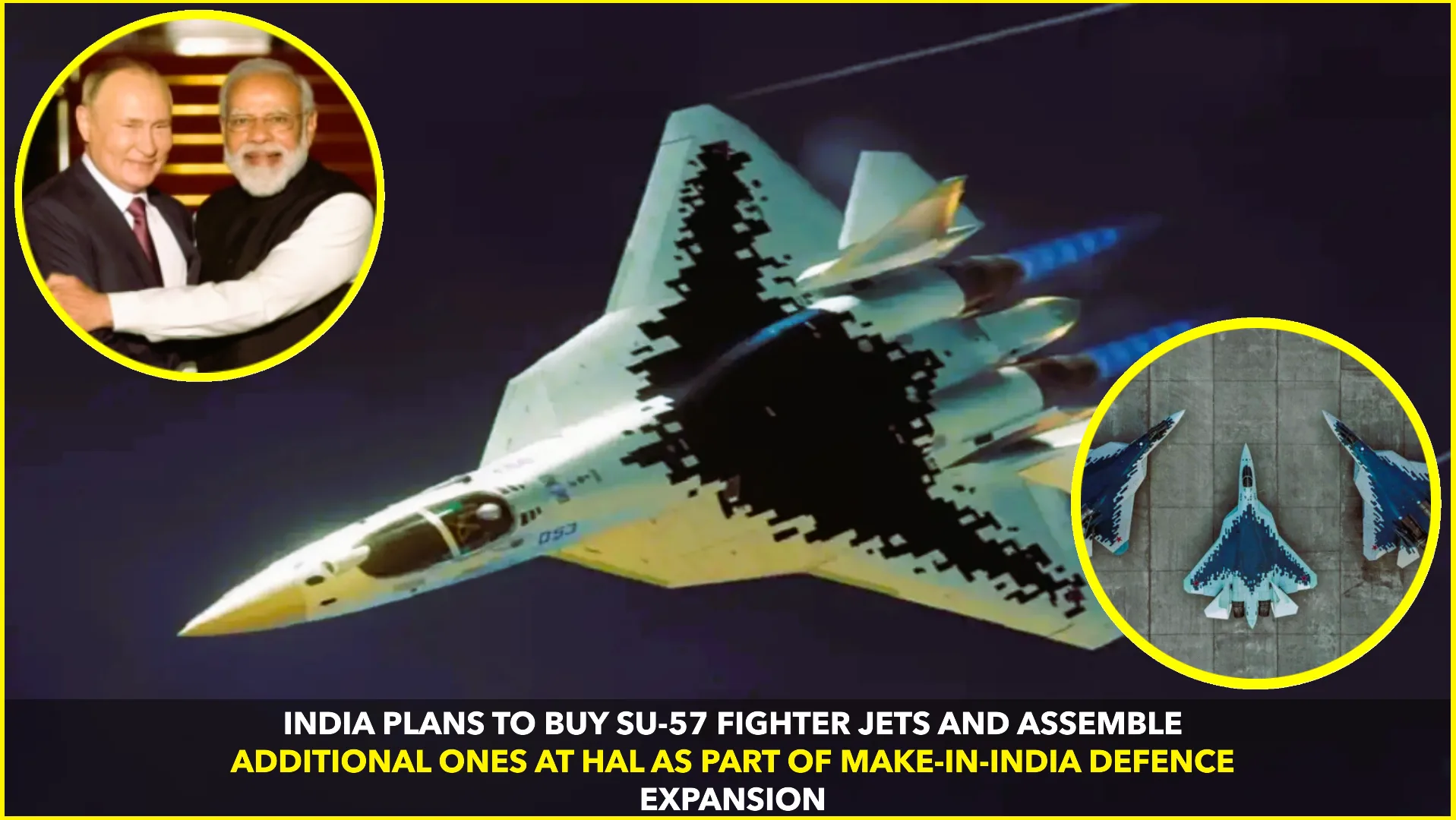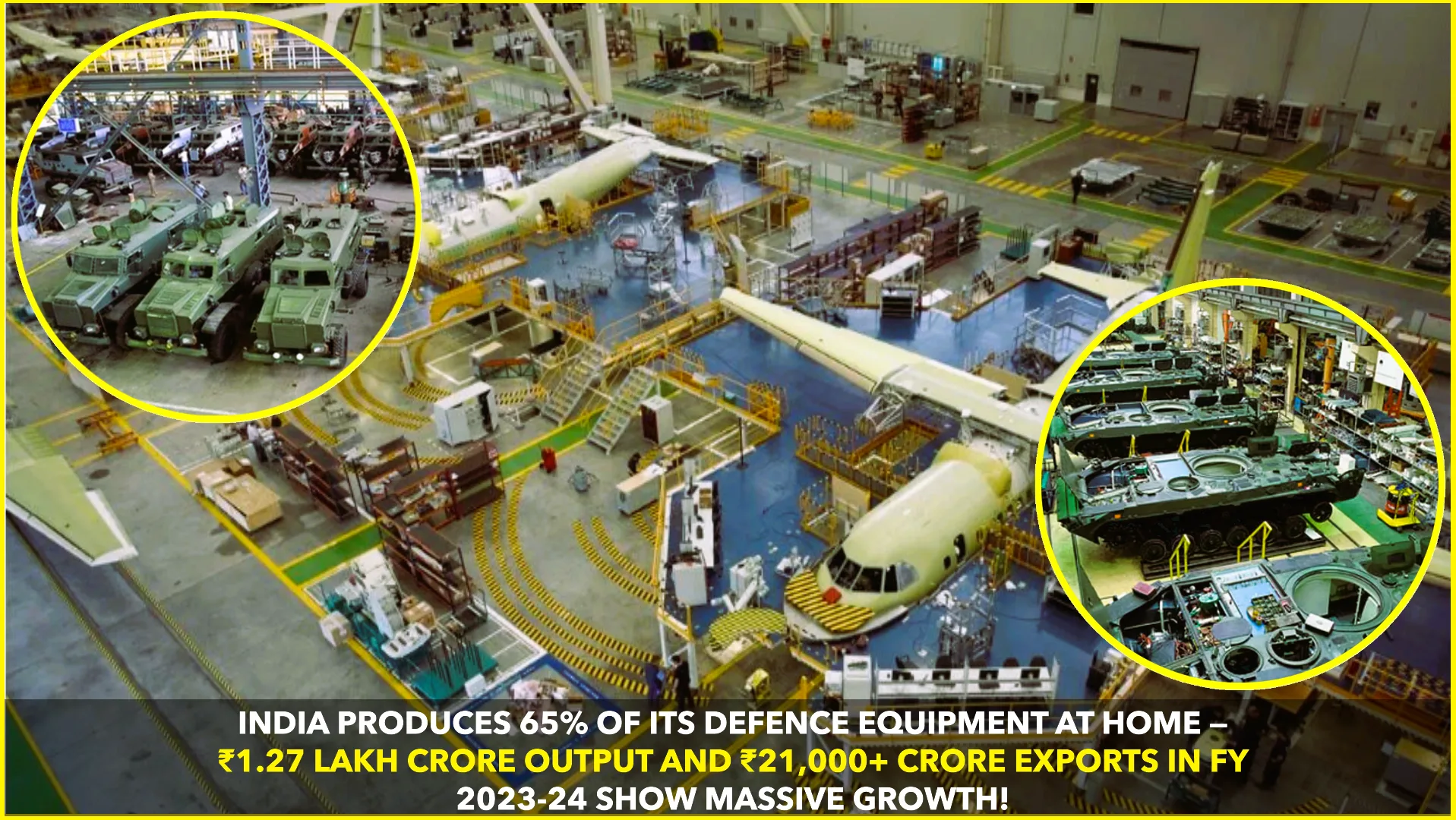India is stepping up its defence trajectory by exploring the acquisition of two squadrons of Russia’s Su-57 fifth-generation fighter jets, with hopes to domestically produce an additional 3–5 aircraft through Hindustan Aeronautics Limited (HAL). This proposal, still in its preliminary stage, would bolster the Indian Air Force (IAF)’s combat readiness and align seamlessly with the government’s Make-in-India mission for indigenous defence production.Business Today+2ThePrint+2
Background & Strategic Need
India had previously exited the Indo-Russian FGFA (Fifth Generation Fighter Aircraft) programme in 2018, citing concerns over the Su-57’s stealth features, engine performance, and limited technology sharing. Despite this, the IAF is now reconsidering the aircraft—not strictly based on its stealth credentials, but rather its ability to address urgent operational requirements highlighted during Operation Sindoor in early 2025.ThePrint+1
The IAF, currently operating with around 31 active combat squadrons—short of its target of 42—is under pressure to bridge capability gaps, especially amid increasing aerial capabilities in neighbouring countries.The Economic Times+2Reuters+2
Features of the Su-57
The Su-57 is classified as a fifth-generation fighter due to its advanced avionics, super-maneuverability, and compatibility with long-range precision munitions. Despite questions over its stealth design and supercruise capability, Russia promotes the Su-57E (export variant) as combat-tested and capable of launching beyond-visual-range missiles like the R-37M and even hypersonic munitions.Business Today+2Zona Militar+2
Even though it may not match the full stealth or maturity of platforms like the F-35, the Su-57 offers immediate value—especially given that the United States has not offered India the F-35 under Make-in-India terms.ThePrint+2Business Today+2
Proposal Structure & Local Assembly
Under the proposed deal, two squadrons would be delivered as ready-to-fly aircraft from Russia. HAL would then assemble up to five more at its Nashik facility, drawing upon its decades-long experience with Su-30MKI production. Previous HAL programmes show that long-term, high-technology collaboration between India and Russia is feasible.Business Today+2ThePrint+2
Rosoboronexport, Russia’s state arms export agency, has confirmed such a possibility, highlighting HAL’s capability to transition smoothly to Su-57 assembly and promising full transfer of relevant technologies.Business Today+2Reuters+2
Benefits to HAL & India’s Defence Industry
This initiative holds enormous strategic value for HAL. Already working on “Super Sukhoi” upgrades for the Su-30MKI—including integration of AESA radars, BrahMos-ER missile systems, and increased indigenous content—HAL stands to deepen its technological capabilities through the Su-57 collaboration.Wikipedia+1
A successful Make-in-India Su-57 programme would elevate India’s defence manufacturing ecosystem, improve technology absorption, and could even permit export opportunities in the future. Russia is reportedly open to that scenario under proper licensing and partnership terms.Defence News India+1
How It Fits into Broader Plans
These plans are separate from the ongoing MRFA (Multi-Role Fighter Aircraft) project, which is expected to bring approximately 114 cutting-edge, 4.5 generation fighters—such as Rafale, Gripen-E, and possibly others—under Make-in-India manufacturing arrangements. India’s homegrown AMCA (Advanced Medium Combat Aircraft), Japan’s stealth project, aims for induction by mid-2030s.Wikipedia+2The Economic Times+2
Sources emphasise the Su-57 proposal is intended as an interim strategic plug—providing long-range strike capability until indigenous platforms reach maturity.ThePrint+2The Economic Times+2
Challenges Ahead
However, the plan is not without hurdles. Indian defence analysts and former IAF officers warn of over-reliance on Russian platforms and note the complexity of indigenizing electronic components, many of which currently depend on supply chains involving Chinese parts and restricted western technologies.Reddit+1
Moreover, Defence Secretary Rajesh Kumar Singh has highlighted that India has not yet entered into formal negotiations for Su-57 or F-35 procurement. The government remains focused on accelerating AMCA’s development, with full involvement of private and public sector players.The Economic Times
What Lies Ahead
At present, the Su-57 acquisition plan is under review by senior defence committees. If approved, delivery of fly-away aircraft could begin within the next year, while local assembly could follow shortly after. India’s broader defence plans include simultaneous induction of Rafales, upgrades to Su-30MKIs, and eventual deployment of homegrown platforms like Tejas Mk 2 and AMCA.Wikipedia+3slguardian.org+3The Economic Times+3
In summary, India’s potential Su-57 collaboration marks a pivot in its defence strategy—balancing immediate capability needs with long-term self-reliance goals. If realized, it would reinforce India’s aerial confidence, modernize military aerospace production, and provide a powerful symbol of Make-in-India ambition.










